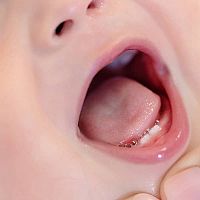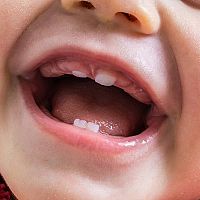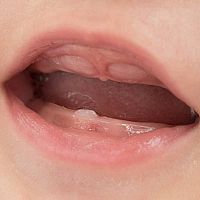
How do gums look when teething?
Although teething and teething is a natural process, it is one of the least pleasant periods in a baby's life. When the first milk teeth start to erupt in a child around the 4th to 6th month of life, it can happen without problems, but also painfully and with a fair amount of crying. Gums tend to be sore and swollen, so moms often look for a way to ease the baby's pain and relieve it when teething.
The teething process is accompanied by various symptoms. It is usually associated with restlessness and irritation, increased salivation , loss of appetite, crying , sleep problems, swollen gums and a red face. You will often encounter putting your fingers in your mouth or sucking on fingers and various objects. Constantly biting the child helps to reduce the itching sensation associated with teething. Diarrhea or bloating and increased temperature may also appear. If the toothache is radiating to the ears, the baby may often grab, rub or scratch his ears. With more pronounced manifestations associated with cutting teeth, we speak of tooth growth syndrome . The child has a high fever, refuses food and has digestive problems. If the temperature exceeds 38 °C, or the child refuses liquids and food, it is necessary to consult a doctor. Exceptionally, teething happens without symptoms and you just suddenly notice a new tooth in your child.
Pruning usually takes place until the end of the 2nd to 3rd year of life. The first and second incisors (8 teeth) are the first to be cut, followed by the first molars (4 teeth), canines (4 teeth) and lastly the back molars (4 teeth). Teeth are cut symmetrically, i.e. teeth of the same type grow at the same time on both the right and left sides.
When teething , the gums are sensitive and sore , they can be red and slightly swollen . Most often, however, the gum turns white and a bump forms on it. The tooth is cut gradually, first a small white tip of the crown appears, gradually it is pushed out completely. Initially, the teeth have a rather angular shape, later they become rounded.
You can massage the child's gums with a finger dipped in coconut or olive oil. This makes it easier for the teeth to pass through the gums. A teether , a brush for massaging the gums, a cooling or anesthetic gel are helpful. In serious cases, you can use painkillers designed for babies after consulting a doctor.
Gallery
Pridať komentár











